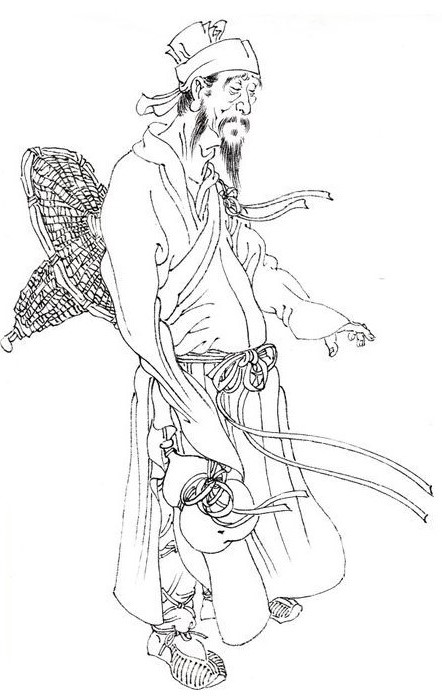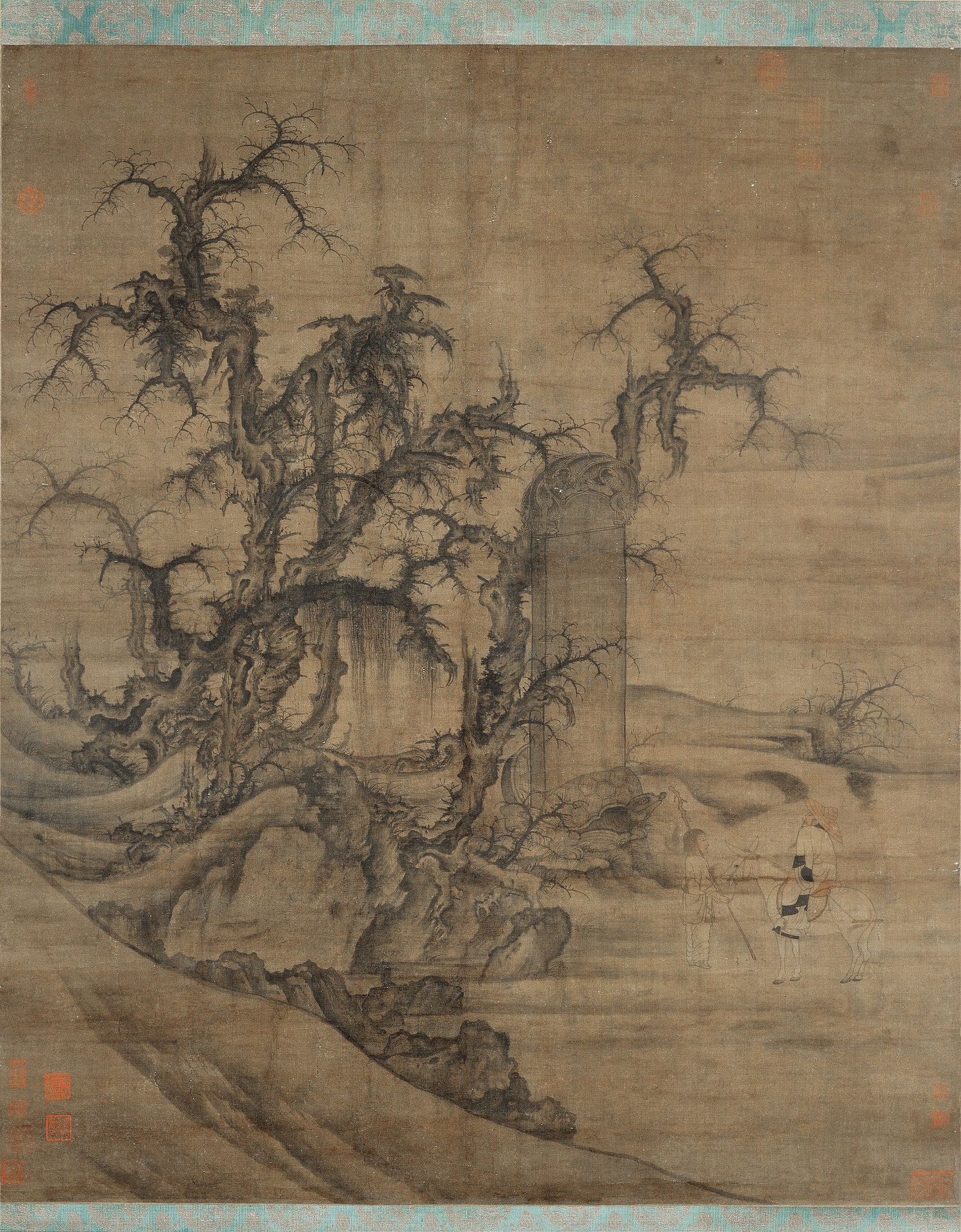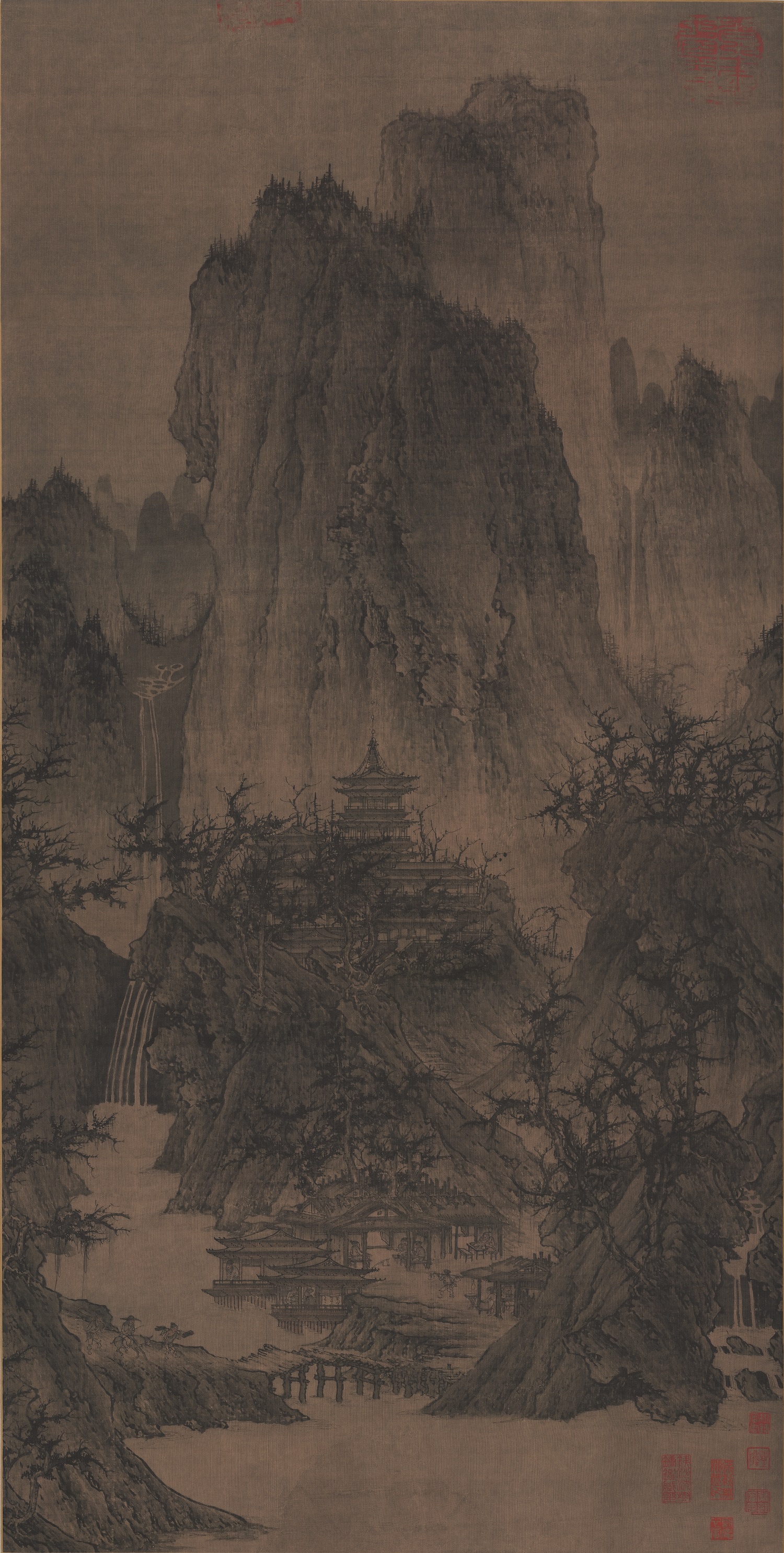Brief of Li Cheng
Li Cheng, Fan Kuan and Dong Yuan were regarded as Three Landscape Masters of Early Song, among them, Li Cheng was the elder one.
Actually, Li Cheng (919-967) lived mainly during the Five Dynasties period (~960), but because of the huge influence to the landscape painting of Song Dynasty and later, he was still listed as the painter of the early Song Dynasty in the history of painting.
Li Cheng’s ancestor was from imperial family of Tang Dynasty. His grandfather had been a senior official during the late of the tang dynasty. But due to social chaos and turbulence of the Five Dynasties period, his family was already in decline.
He was a man with great talent and ambition, but he had no chance to get an official career to apply his talent. With no choice, he devoted himself to poetry and wine, and at the same time, he also entertained himself with painting to express his depressed feelings.

As many artists, Li Cheng loved wine, and many of his artistic inspirations came from wine. It was said that all friends who wanted him to paint must first bought a table of wine, after he was drunk, he began to paint, the artwork would be regarded as a treasure by the man who got it finally.
Another story according to the record, Li Cheng seldom painted for others, but he had a very good relationship with a boss of a wine shop in Bianjing, Li Cheng often went to this store to drink, once for all day, so he drew a lot of paintings for this boss of course, even the both sides wall of this shop’s door was painted by him. Li Cheng drank all day long and finally died in a hotel at the age of 49.
Li Cheng's Painting Style
According to the general history of painting, Li Cheng learned painting style from Jing Hao (荆浩) and Guan Tong (关仝) at the beginning, but from his practical artworks, the appearance are completely different with these two predecessors , except the leaves was similar with Guan Tong. This was mainly because Li Cheng had the courage to seek change and was good at inheriting and innovating. He could not only learn from predecessors, but also learn from nature, form his own unique artistic style.
Different from Jing Hao and Guan Tong, whose painting was mostly about high and steep mountains, Li Cheng mostly used level distance and cold woods to compose his painting. He painted the broad landscape of the plain and hilly terrain in Henan and Shandong province, where he lived.
In the brushwork and ink, Li Cheng‘s painting also gave great different feelings. He did many landscape paintings with diluted ink, known as “treating ink like gold”, which gives the appearance of being in a foggy dream. He draw the stone like the moving cloud, called “cloudlike texture“, draw the branch of the cool woods like “crab claw”.
Influence of Li Cheng
Li Cheng had a great influence on the development of landscape painting in the Northern Song Dynasty. Just during this very period, Li Cheng was known as “the first in ancient times and today”, and later generations gave him even the higher praise.
Because Li Cheng was already famous even when he was alive, numerous painter tried to learn his brushwork, mostly from to Hebei and Shandong province. These painters, who inherited Li Cheng’s style, developed into a painting school of combination of landscape painting, you can call it “QiLu painting” (QiLu is an alias name of Shandong province), and also because the most famous painter among them is Guo Xi (郭熙), this school is also called “Li-Guo school”.
Although there were many people who studied his painting style, there few Li Cheng’s artworks left. The first reason was his works were probably limited because he did not live long enough. Secondly, as a typical scholar, he did not paint for a living, but just for the entertainment of scholars. According to Mi Fu (米芾), a famous calligrapher and collector of Northern Song, he had seen more than 300 of Li Cheng’s paintings in his lifetime, of which only two are genuine works. On one hand, it identified that Li Cheng’s genuine artworks are few; on the other hand, it also identified that there are many counterfeit caused by the large number of people following this style.


